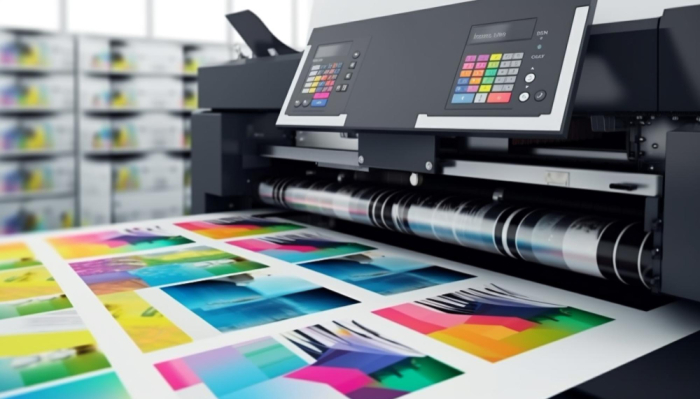Hey there! So, you’ve heard about how awesome digital printing is, right? It’s fast, colorful, and super cool. But, just like anything else in the tech world, it comes with its own set of challenges. Let’s dive into some of the bumps on the digital printing road and how folks are tackling them.
1. Quality Control
Even though digital printing can create stunning images, sometimes things can go a bit off. Maybe the colors aren’t right, or the image looks blurry. Ensuring consistent high quality is a big challenge. However, thanks to advanced software and regular machine checks, many of these issues can be kept at bay.
One of the most vital aspects of digital printing is ensuring that each print’s output matches the intended design. This isn’t always straightforward. For instance, colors might appear vibrant on a computer screen but print out slightly duller. Or, details that are clear in a digital design might blur when printed. Consistent quality checks, calibrating printers regularly, and using advanced software can help in maintaining consistent output. By establishing rigorous quality control processes, businesses can ensure customer satisfaction and reduce wastage.
2. Material Limitations
Not all materials are friends with digital printing. Some might not absorb the ink well, while others could lose color quickly. Figuring out the best materials for printing can be a bit of a puzzle. But don’t worry! With ongoing research, we’re finding more and more materials that work well with digital methods.
Different materials react differently to inks and printing processes. While paper might absorb and display ink in a certain way, fabrics, plastics, or metals might react differently. Some materials might cause the ink to smudge, while others might not hold onto the ink effectively, leading to faded designs over a short time. To navigate this challenge, ongoing research and experimentation are essential. By pairing the right materials with the correct printing settings and inks, better results can be achieved.
3. Keeping Up with Tech
Tech stuff changes fast. Just when you think you’ve got the latest printer, a new one pops up! For businesses, staying updated with the latest technology can be both challenging and pricey. The key is to balance between updating equipment and optimizing current tools.
The realm of digital printing technology is ever-evolving. Newer models of printers, advanced software, and innovative inks frequently enter the market. While these advancements can improve printing quality and efficiency, they also mean businesses need to continually update their knowledge and, often, their equipment. One way to stay updated without frequent large investments is to participate in tech leasing programs or attend industry seminars and workshops.
4. Environmental Concerns
While digital printing can be eco-friendly, it’s not always the case. Inks and materials can sometimes harm the environment. The challenge? Making sure that digital printing processes are as green as possible. This means using eco-friendly inks, recycling waste, and choosing sustainable materials.
Digital printing, while revolutionary, also poses some environmental challenges. The inks used, if not chosen carefully, might contain harmful chemicals. Waste generated from misprints or printer maintenance can also contribute to environmental concerns. Businesses can address these challenges by opting for eco-friendly inks, recycling waste products, setting up efficient waste management systems, and choosing sustainable materials that don’t harm the environment during the printing process or at the end of their lifecycle.
5. Cost Issues
Even though digital printing can be more affordable in some cases, initial setup costs can be high, especially for top-of-the-line equipment. For small businesses, this can be a hurdle. Fortunately, many companies now offer financing options and budget-friendly solutions.
Initial investments in digital printing technology can be steep. High-quality printers, the necessary software, and initial material stock can strain a small business’s budget. To alleviate this, businesses can explore financing options, lease equipment instead of purchasing, or collaborate with established printing companies until they can afford their setups. Additionally, considering refurbished or gently used equipment might also be a cost-effective starting point.
6. Training and Skills
Having a fancy digital printer isn’t enough. You need skilled people to run it! Training employees to use new technology can take time, and finding experts can be tough. However, many organizations are now offering specialized training courses to bridge this gap.
A printer is only as good as the person operating it. Digital printing equipment, with all its features and settings, requires a skilled hand. Ensuring that employees are well-trained is crucial. This might mean investing in workshops, on-the-job training sessions, or even hiring specialists with prior experience. As the industry grows, more and more institutions are also offering courses on digital printing, creating a skilled workforce ready to take on the challenges of the industry.
In Conclusion
Flyers printing is a fantastic world filled with vibrant colors and endless possibilities. But, like any journey, there are some challenges along the way. By understanding these challenges and finding smart solutions, we can make the most of what digital printing has to offer, creating amazing stuff while caring for our planet and pockets. So, the next time you see a stunning digital print, you’ll know the dedication and effort behind it!
By understanding these deeper intricacies and challenges of digital printing, businesses and enthusiasts alike can better navigate the landscape, ensuring high-quality outputs while also being efficient and environmentally conscious.
Tags: Challenges of Modern Digital Printingdigital printing

